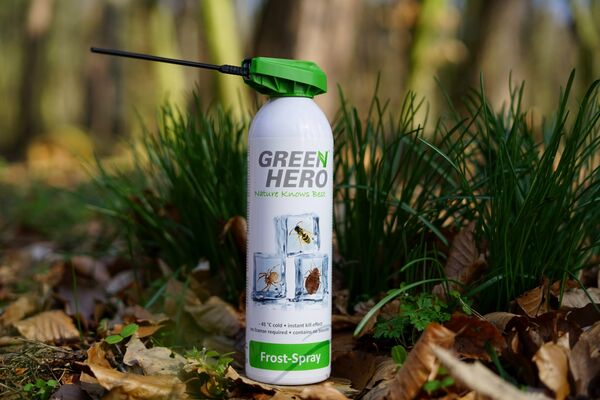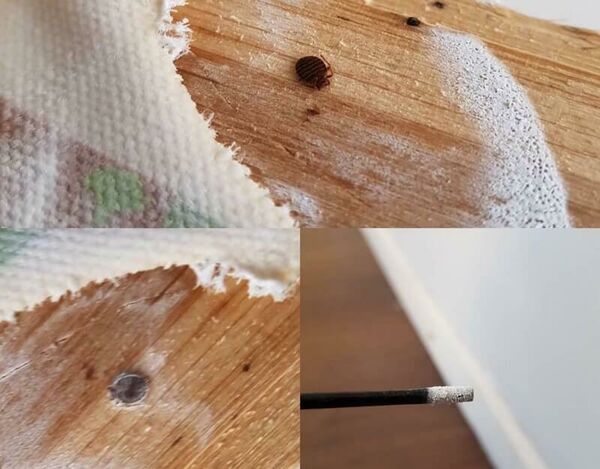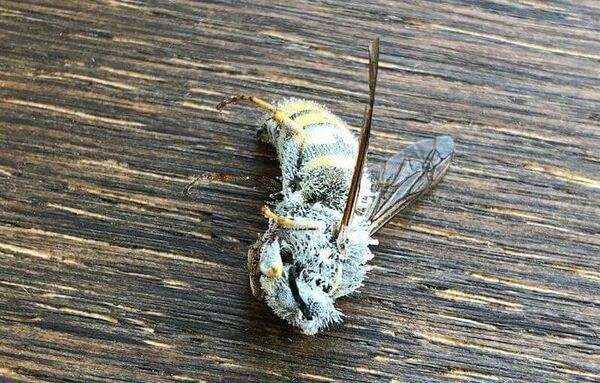ECOLOGICAL AND POISON-FREE
INSECT CONTROL
A widely used standard in pest control is the use of pesticides. Pesticide is a collective term for the subcategories biocides and plant protection products. Biocides are used to control harmful organisms, but not to protect living plants. These include, for example, wood preservatives or rodenticides. Plant protection products, as the name suggests, are used to protect living plants from pests. The use of such preparations promises a quick and large-scale control success. In agriculture, a wide variety of pesticides are used to protect crops from damage by insects. But insecticide use poses great risks to people and the environment. Often treated foods are contaminated with preparation residues that we ingest when we eat the food. These put a strain on the human body and can even increase the risk of cancer.
Another risk is the unintentional pollution of our waters. Often, not 100% of the preparations reach their intended place of use, but are washed away by rain directly after use and thus end up in our rivers. In the above example of agriculture, crop protection products are necessary because of the high financial pressure on the industry and the need to avoid potential crop failures or crop reductions.
WE ARE ALWAYS LOOKING FOR THE MOST HUMANE
SOLUTION FOR EVERY PROBLEM
THE FROST SPRAY FROM GREENHERO
In the private and professional pest control environment, on the other hand, many alternatives to the use of pesticides are available. Especially when it comes to acute control of an active infestation or the removal of wasp nests, the use of biocides is often not necessary. Common practice is still powders or pesticide sprays containing toxic ingredients (often nerve agents) that end users can still buy on the Internet or in stores. If, however, the wasp nest – as is so often the case – is located in the roller shutter box of the children’s room or bedroom and dust is used here, these nanoparticles are also deposited automatically, uncontrollably and above all invisibly on pillows, sofas, carpets or behind furniture and thus constantly penetrate our organism via our skin or through our lungs and cause damage. This is particularly dangerous for children, which is why associations and consumer protection groups have been fighting for years to have these products severely restricted or banned. In the common practice of professional SBK operations, these products are almost no longer used anyway.

Frost sprays specially developed for pest control can provide infestation control of insects or wasp nest removal in an ecological and humane way using a thermal process. The sprays deliver a burst of spray with a temperature of up to -45 °C. Thus, pests are shock frozen within a few seconds and can be removed afterwards. The process results in shock freezing of the water in the cells of the insects. These cells subsequently expand and burst. Unlike conventional control methods, this results in a quick and humane kill of the insect. The spray kills pests reliably and, above all, directly – and not only individual insects, but also huge nests, as many videos on YouTube of professional SBKs and the growing order volumes clearly prove.
BED BUG CONTROL
For acute control of bed bugs, the thermal method with frost sprays is particularly suitable. The insects are able to adapt to cold outside temperatures over several weeks, but the organism does not manage to process the extreme cold of -45°C. Another relevant advantage of the thermal freezing process is that it can control not only the adult insects, but also destroy the eggs of bed bugs. Elimination of eggs is not possible with conventional biocides for bed bug control. This results in many follow-up treatments and infestations can rarely be completely removed. The above-mentioned dangers, which also emanate from biocides for the human body, are to be considered particularly critically in the context of bedbug control. Bed bugs occur there in areas such as pillows or mattresses.

Biocides may be used only under strict precautions. These measures are not least associated with high costs if the infested areas, for example in hotels or hospitals, are used commercially. Here it is not possible to rent the treated rooms for several days. After thermal treatment, on the other hand, a room is directly released.
From our own experience, we have been able to accompany how a well-known hotel switched from weekly biocide treatments – which was certainly not a nice effect for the guests anyway – to frost treatments, and thus a) could save a lot of money because they could apply the biocide-free alternative themselves, b) had the infestation under control very soon, since the frost also attacked the eggs while the biocide never eliminated them and c) was able to create a harmless, toxin-free environment for the guests, which served the health and recreation of all.
WASP CONTROL
Wasp nests are often removed with the help of the insecticide pyrethrum. Pyrethrum is a neurotoxin that affects not only the target organisms, but also the user and other non-target organisms. Professional pest controllers know this when in summer after a day with 5 wasp nest fights the head hurts. Here, too, the thermal method can be used with frost sprays. Some of the sprays are supplied with a foldable adapter, which serves as an extension and concentration of the spray. This adapter can be poked directly into a wasp nest and the spray applied with pinpoint accuracy inside the nest.

Commercial frost sprays can be used to control conventional nests as well as ground nests and individual insects. The size of the nest is independent of this. On Youtube or in specialized forums on the Internet you can find numerous examples of giant-sized nests (human-sized), which were successfully treated with frost methods.
Of course, this method is also suitable for pest control in the private environment, as these sprays are available on the market without a license and freely for sale. However, it is important to observe the species protection regulations before control and, in case of doubt, to obtain information from the responsible veterinary office or a competent pest controller. Testimonials show that professional users like to use the product as an alternative and are convinced of the process in the long term.


